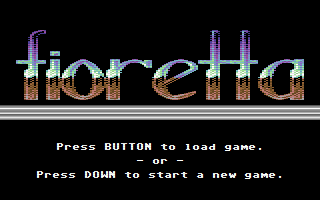Fioretta
Platformer, © KesieV 2016

Stefano 'il Kusagari' Fioretto, one of my best gamer friends, gifted me with Bloodborne (2015), the well known Playstation 4 exclusive spin-off of the Souls series, for my birthday. He handed me that game with that predictable grim smile on his face.
He knew that I was dodging the Souls series due to its difficulty but he quickly explained its reasons with a new serious face after a short while: 'It's not true that it is that hard and a Castlevania lover like you can't skip this game'. I played that to the end and I've to say that Stefano was damn right and I'll thank him forever.
But was Bloodborne good? And how?
Most of the gameplay is based on walking around and triggering enemies aggro. I felt that enemies, after meeting the player, started choosing a random move from their set and then perform it: the player have to dodge them and find the right time to attack. These mechanics are quite anachrnonistic for a full retail game, since we can find aggro-and-run games like Gauntlet back in the 1985. But it's some weak criticism, since - hey - it worked well on Gauntlet and the same is for Bloodborne. But, probably, the secret sauce for Bloodborne hardness and satisfaction lies in the enemies behaviour: random selection of hard to read attacks mixes up reflex and gambling.
I felt like playing videopoker: for the first hands you feel that you're playing your cards well and that's why you're winning but then you start feeling the weight of randomness, adding some fatalism when evaluating outcomes, breaking the magic and, surprisingly, the tension. Keeping this mix balanced justifies some other strange design decisions: bossess are randomly scattered around the game, without sorting them by difficulty (i.e. I've found the first boss harder than the others), summoned hunters, which are supposed to help you, are way too much dumb, RPG elements are not so effective and helping NPCs on their quests (which will gift you with helpful items later) in hard and really unclear.
The suggested Castlevania influences are there and very noticeable: enemy, environment ahestetics and map design resembles the ones of Symphony Of The Night (1997) so much that an entire part of the game, Castle Cainhurst, is a love letter to that series, from the first cutscene to the end. But the most crucial influence comes from H.P. Lovecraft, 1890's greatest horror novelist, which is so deep that most of the game confusing plot is understandable only if you're a very devoted reader.
So: old mechanics, gambling, strong influences from other games and mandatory American narrative knowledge. Is this bad or hard? Don't fall into the critics trap again: there isn't a right answer. I had a lot of fun, despite the swearing and once into the right mood, and I'll surely get its next chapter, when it will come out.
Plot!
You fell in a strange dark world. Where is it? Who are you? What are you supposed to do and why? On the intro screen use A BUTTON for loading your previous game (if any) or DOWN for starting a new one. Use LEFT/RIGHT for moving your character and UP for jumping. Hold down the A BUTTON for performing an action: hit UP for attacking with your main weapon and DOWN for the secondary one, RIGHT for healing and LEFT for throwing a rock. This time, Commodore 64 style and audio!
(Want to share something? You can find me on Twitter!)
 Install / Add to home
Install / Add to home
 View game sources
...or play it online below!
View game sources
...or play it online below!